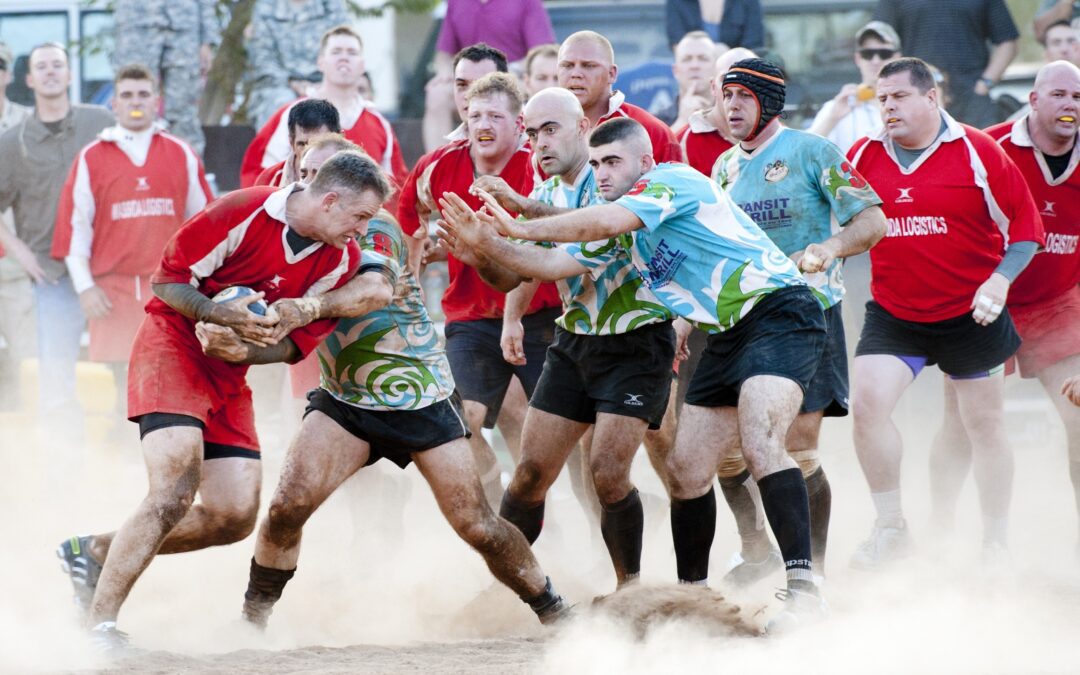Table of Contents
Sport related concussions seem like a conversation designated about a decade ago, but I think it is still relevant to inform the best practices to help reduce those rates of sport related concussions. When we break it down, most sport related concussions fall into the category as a mild tramatic brain injury (mTBI). Concussions furthermore are categorized into head, face, and neck injuries, but are not indicated on how severe of a concussion the player experienced. It’s still a relevant conversation and even though precautionary efforts have been made in both detection, removal of players from the field, and player-union requirements for sideline recovery are mandatory, the role of strength & conditioning in reducing sport related concussions cannot be overlooked.
The most popular recent headline regarding sport related concussions came from this previous NFL season with Miami Dolphin’s quarterback Tua Tagovailoa, who suffered controversial concussions on subsequent weeks against the Bills and Bengals. A missed sideline protocol was popularly linked to then his subsequent concussion the following week where he was carted away where in the hospital they announced he had suffered a second sport related concussion. While this was eventually linked to the doctor who cleared Tua for availability, and there is no control over the randomness and probability over hits, we can look at strategies used to lower the risk of sport related concussions.
Sport Related Concussions
Injury Rate
Looking at sports like rugby, we see multiple risks of injury due to contact with more than a quarter of them being categorized as mTBI’s. Sport related concussions in rugby, including practices and games, hovers around a .3% to 11.4% incidence rate per 1000 hours according to current studies. Those rates are even higher for children and teenagers: sport related concussions for U9-U18 junior players in rugby hover around 12.7 per 1000 match hours. In other contact sports like hockey, researchers believe sport related concussions are being underreported in British Columbia Amateur Hockey Association (BCAHA), where estimates show concussion rates between 6.65-24.30 per 1000 player game hours.
Effects Post-Career
Sport relation concussions have a horrible downstream effect on an athlete’s life after they have left the sport. Players who experienced one or more concussions throughout their history specifically suffer deficits in cognitive flexibility, executive functioning, verbal memory, and reaction time according to research. Substance abuse, interpersonal relationship issues, drug abuse, depression, and other social-relation issues are also widely known as potential side effects from a lack of proper treatment methods or prevention. The question that comes up then should be how do we lower the incidence rate if it is not through medical treatment in the sport realm?
Preventative Measures
The strength and conditioning field has come a long way from the stereotyping position it was regarding concussions as a “get tough” moment for athletes. Sport related concussions can now be reduced through a few avenues. They include improving tackling style, increasing an athlete’s sport IQ, neck strength interventions, and athlete education.
Tackling Style & Athlete Sport IQ
Proper technique and critical thinking can create situational tracking can prevent most injuries. The tackle is such a dynamic open skill that is reliant on factors such as player position, speed, context, mass, and point of time in game. Most sport related concussions come from contact plays to the upper extremities and within rugby, the tackler is the most head impracted player. A combination of head-on collisions, incidental contact, and tacking technique has been identified as top predictors of sport related concussions. Understanding an athlete’s orientation, focusing on trunk tackles seem to be the best strategy.
Neck Strengthening and Strength & Conditioning
More research is required to know the relationship between neck strength to sagittal and coronal plane accelerations, but some research suggests neck flexion and extension strength can help lower those accelerations mentioned to prevent sport related concussions. Strength & conditioning programs that integrate balance/pertubation, plyometrics, and controlled rehersals of sport specific landing and cutting moves can also reduce the incidence rate of sport related concussions. Evidence like this suggests that higher levels of physical preperation mixed in with sport-specific drilling for avoiding contact and initiating contact can help reduce the liklihood or severity of sport related concussions.
Athlete Education
Eliminating the notion of “head strong” or the masculinity of standing up after “being knocked out” has to continue in order to reduce the chances of subsequent sport related concussions after an initial event. Athletes are told at a young age that tolerance of pain is part of the game. There is sometimes pressure placed on coaches and parents who emphasize a return to play after a HIA or off-field assessment is taken place. Add on a player’s sentiment that they might be letting down their team by standing out and you can see how concurrent sport related concussions continue to happen. Adhering to guidelines can extend an athlete’s playing career, which is more crucial than the result of any one game or play.
Conclusions: Sport Related Concussions
As much as international organizations, player-unions, and formal education is provided to coaches, parents, and athletes, sport related concussions will still happen. The context for these events are very hard to predict and often can be reduced through education, tackling styles, sport IQ, neck strengthening, strength & conditioning, and health promotion. Contact sports will continue to be an aggressive field of play but preparing your athlete for the field cannot be overlooked as part of either their long-term athlete development or performance on the field of play.

